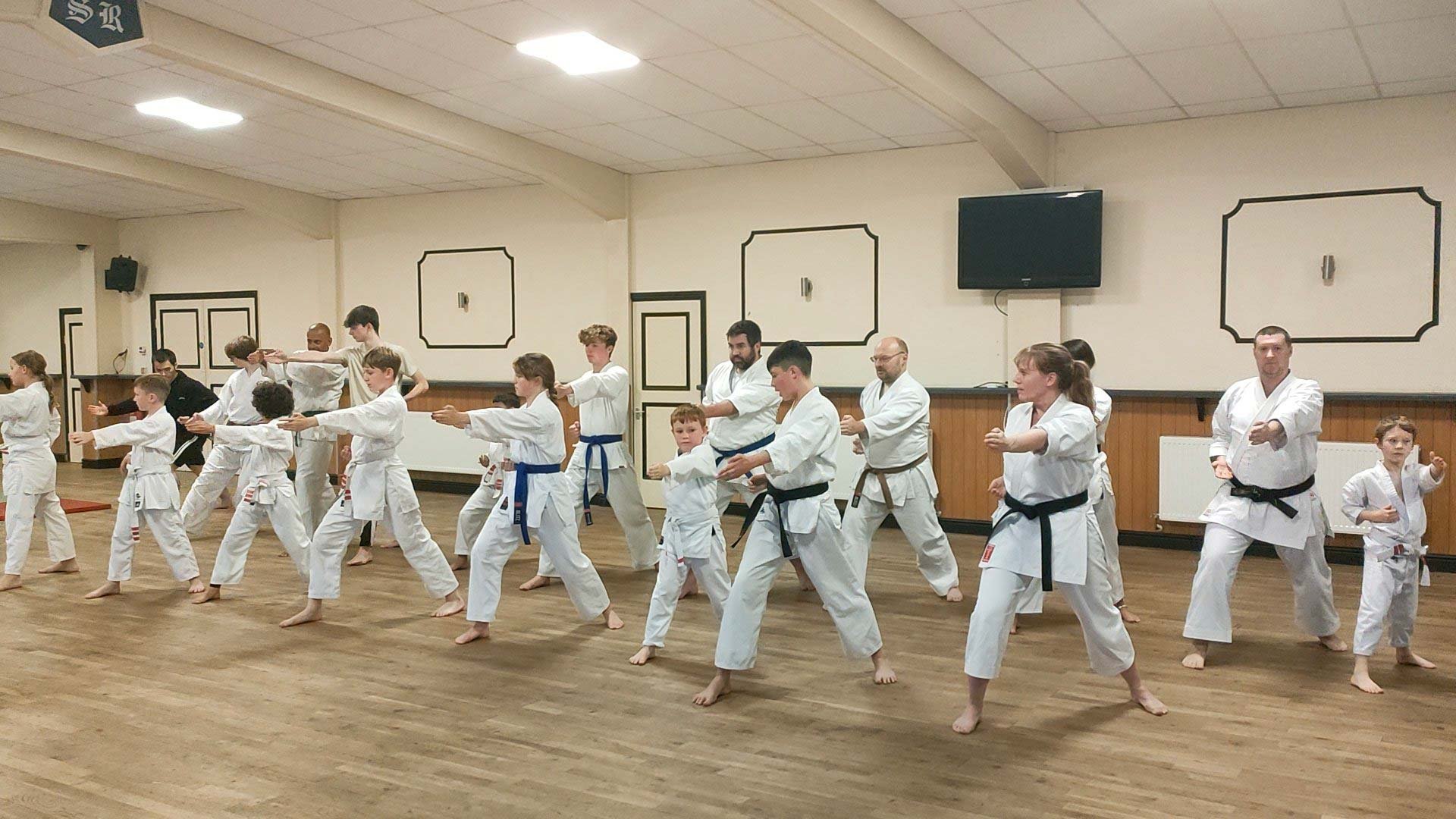
Embusen
Kata Shape
The Shape of a Kata
Embusen is best explained as the shape of a Kata, the floor plan, or the lines of movement used for a Kata. When performing a Kata, you should be able to start and finish from the same spot give or take 6 inches from any side.
Each Kata has its own unique pattern and the pattern reflects on the way that the Kata was designed, e.g. Gankaku has a pattern that is in a straight line. The reason Gankaku moves in a straight line is due to the Kata being created to defend attacks from a staircase or from a steep gradient, using the lower body when you are up high and upper body when you are lower than the attacker.
Other Kata have patterns that change direction though out, however they all return to the same starting position. Embusen is often overlooked, but it is an essential part of Kata training and is key to understanding the applications within the Kata.
Lines of Movement
Within the 26 Shotokan kata, you will see five basic patterns. Embusen is represented by Kanji characters (Japanese symbols for writing) and it is these characters that make up the patterns that we follow in Kata. When looking at the patterns, the lines we follow are assigned numbers to make it easier whilst teaching. The first horizontal line on which you start is known as line number 1, The vertical line becomes number 2 and the second horizontal line becomes line number 3.
The Five Basic Lines of Kata Movement
Ichi
Straight Line
Tei
T Shape
Ko
H Shape
Ju
Plus (+) Shape
Do
T and Plus (+) Combined
The Kata that follow pattern (Ichi) are Tekki Shodan, Tekki Nidan, Tekki Sandan, Gankaku and Meikyo.
For pattern two (Tei), we have kata Heian Sandan, Heian Godan, Bassai Dai, Bassai Sho, Empi, Jiin and Wankan.
Pattern three (Ju) Kata are Hangetsu, Jitte, Gojushiho Dai, Gojushiho Sho, Chinte, Sochin, Nijushiho and Unsu.
For pattern four (Ko), Heian Shodan, Heian Nidan and Jion.
And for pattern five (Do or Tsuchi), the remaining Kata, Heian Yondan, Kanku Dai and Kanku Sho.
Remember that even though Kata may go off on diagonal lines, the Kanji above are the foundations on which you should move.
When practicing or learning new Kata take a few minutes to look at the Embusen beforehand as this will be a big aid in learning the Kata as it allows you to visualise where you need to move to next.
